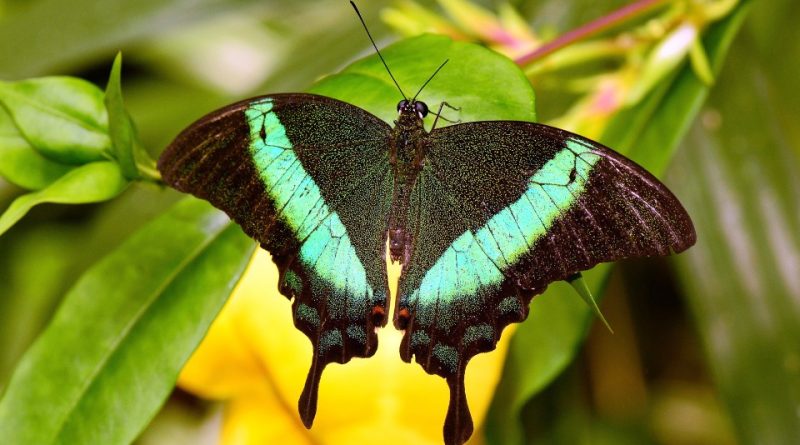Papilio palinurus
Papilio palinurus
The Emerald swallowtail (Papilio palinurus Fabricio, 1787), is a moth belonging to the Papilionidae family.
Systematic –
From a systematic point of view it belongs to the Eukaryota Domain, Animalia Kingdom, Sub-Kingdom Eumetazoa, Superphylum Protostomia, Phylum Arthropoda, Subphylum Tracheata, Superclass Hexapoda, Insecta Class, Subclass Pterygota, Endopterygota Cohort, Order Oligoneoptera, Order Epidopidae, Order Epidopata, Heteroneura, Ditrysia Division, Papilionoidea Superfamily, Papilionidae Family and therefore to the Genus Papilio and to the Species P. palinurus.
Within this species there are some subspecies:
– P. p. palinurus – Burma, Malaysia, Borneo;
– P. p. auffenbergi Späth, 1992 – Simeulue, Indonesia;
– P. p. nymphodorus (Fruhstorfer) – Basilan Island;
– P. p. adventus (Fruhstorfer) – Nias Island;
– P. p. Dedalo (C. & R. Felder, 1861) – Philippines;
– P. p. angustatus (Staudinger, 1888) – Palawan Island, Philippines.
Geographical Distribution and Habitat –
The emerald swallowtail is a moth native to Southeast Asia which, with its subspecies, is present in Burma – Peninsular Malaysia, Sumatra, Borneo, Indonesia (Simeulue, Nias Island), Philippines (Basilan, Palawan, Balabac, Cuyo, Busuanga and Dumaran).
The habitat of this butterfly is within the rain forests of these Asian regions.
Morphology –
Papilio palinurus has a wingspan that reaches about 8-10 centimeters. The dorsal sides of the wings are covered with green scales and the background varies from dark greenish to black, with wide bright emerald green metallic bands. The lower parts are black with orange, white and blue spots along the edges of the rear wings, which carry two tails at the end.
The iridescent green shine of the bands of this butterfly is not produced by pigments, but is a coloring due to the microstructure of the scales of the wings. This refracts the light and gives rise to reflections in the visible blue and yellow, producing the perception of the green color if mixed additively.
Aptitude and biological cycle –
These butterflies, as well as for their characteristic livery are recognized for the flight that is fast and fast enough.
The caterpillars feed on plants of the genus Euodia belonging to the Rutaceae, that is of the same citrus family.
Ecological role –
From an ecological point of view, the caterpillars of this butterfly, as they feed on plants of the citrus family, can cause particular problems for citrus crops. However, due to its particular coloring, this butterfly is particularly appreciated by butterfly collectors and is therefore found collected in various parts of the world.
Guido Bissanti
Sources
– Wikipedia, the free encyclopedia.
– Russo G., 1976. Agricultural entomology. Special Part. Liguori Editore, Naples.
– Tremblay E., 1997. Applied entomology. Liguori Editore, Naples.

